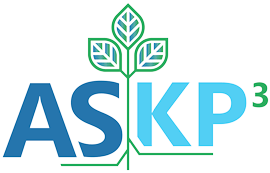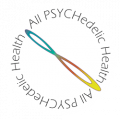About Ketamine
- Home
- About Ketamine
the anti antidepressant
What We know about ketamine
Ketamine is an FDA approved medicine and has been in use since the 1960s.
It is a Schedule III drug.
Yes, it is a class of drugs known as psychedelics which may be described as mind-expanding that are able to induce states of altered perception.
It blocks the NMDA receptor, when administered in lower doses, has proved to play a significant role in minimizing the symptoms of major depression.
It is known to stimulate neuronal growth, synaptogenesis, and neuroplasticity*.
It is administered by a licensed anesthesiologist, nurse anesthetist, nurse practitioner, or trained physician.


the how
How Ketamine Works
The body and brain are connected. Chronic stress and anxiety that we hold whether we recognize it or not, cause a host of harm throughout the human body including brain cell function (communication). This chronic damage of function can result in depression.
Ketamine works by reducing NMDA receptor function, modulating or preventing the brain’s glutamate transmission-which is what makes it different than all other antidepressants. This reduction leads to a rapid increase in glutamatergic activity, regeneration of synaptic connections* between brain cells that have been It is a sort of “rebooting” for the communication system between areas of the brain and body that have previously been damaged by these chronic conditions. Ketamine also stimulates neuronal growth, synaptogenesis, further supporting brain *neuroplasticity which is what we call the brain’s ability to continue to change, grow, learn, and remember in response to its environment.
Ketamine works by reducing NMDA receptor function, modulating or preventing the brain’s glutamate transmission-which is what makes it different than all other antidepressants. This reduction leads to a rapid increase in glutamatergic activity, regeneration of synaptic connections* between brain cells that have been It is a sort of “rebooting” for the communication system between areas of the brain and body that have previously been damaged by these chronic conditions. Ketamine also stimulates neuronal growth, synaptogenesis, further supporting brain *neuroplasticity which is what we call the brain’s ability to continue to change, grow, learn, and remember in response to its environment.
Recently performed and published studies have shown that a very low dose of ketamine infused slowly has had a dramatic positive effect on clinical depression, especially towards suicidal feelings and in cases that don’t respond to standard treatment. The results indicate an immediate resolution of depression, and the relief from a single infusion can last for as little as a few hours to as much as a few weeks.
* Synapse is a structure which allows nerve cells to pass either electrical or chemical information between each other. Think of this activity as communication within the brain. Synaptic plasticity is the ability of synapses to strengthen or weaken over time, in response to increases or decreases in their activity. We experience an explosion of synaptic activity in childhood as we are learning about everything from language acquisition to walking. This period is called exuberant synaptogenesis. many factors reduce or deplete synaptic activity in certain regions of the brain, including stress, sleep, age, brain injury, environment, nutrition.
* Synapse is a structure which allows nerve cells to pass either electrical or chemical information between each other. Think of this activity as communication within the brain. Synaptic plasticity is the ability of synapses to strengthen or weaken over time, in response to increases or decreases in their activity. We experience an explosion of synaptic activity in childhood as we are learning about everything from language acquisition to walking. This period is called exuberant synaptogenesis. many factors reduce or deplete synaptic activity in certain regions of the brain, including stress, sleep, age, brain injury, environment, nutrition.
the experience
What patients experience
The medicinal psychedelic aspects of Ketamine Assisted Psychotherapy may open a person up to think, feel, see, and talk about their lives, possibly difficult topics in ways they may have been unable to or uncomfortable to address or understand previously. Patients have described Ketamine as stimulating unique experiences similar to a dreamlike state with visual symbolism that allows profound connections to be made between one’s past, present and future by way of greater understanding and perspective. Instead of talking around the subject, Ketamine serves as an accelerant of the dialogue within psychotherapy so the topics that truly need to be addressed can be brought to discussion.
Ketamine is not a truth serum or a magic bullet. In session, patients are relaxed, but also aware of their thoughts and what they choose to focus on. Unpleasant memories will not be erased, but Ketamine may help identify and talk about the source(s) of struggle. Ketamine may shine a light in a new corner of the ongoing interpretation of experiences, all the factors surrounding the event(s), how it has affected or shaped one’s life and may potentially help patients see an improved way forward.
Ketamine is not a truth serum or a magic bullet. In session, patients are relaxed, but also aware of their thoughts and what they choose to focus on. Unpleasant memories will not be erased, but Ketamine may help identify and talk about the source(s) of struggle. Ketamine may shine a light in a new corner of the ongoing interpretation of experiences, all the factors surrounding the event(s), how it has affected or shaped one’s life and may potentially help patients see an improved way forward.









